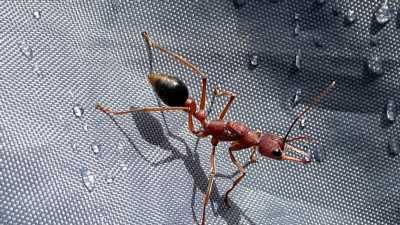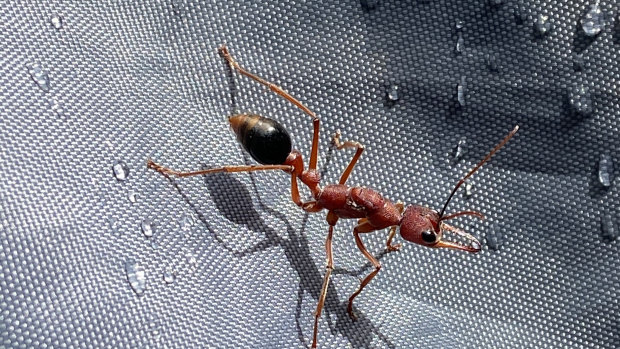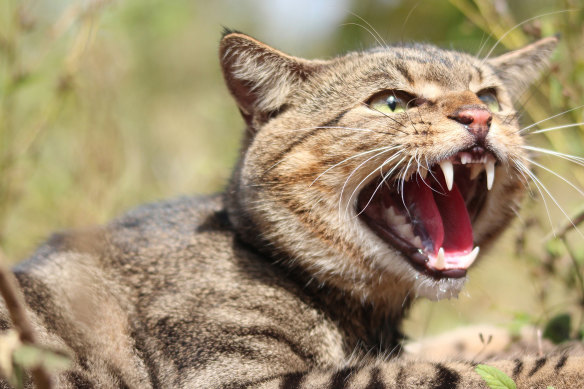Save articles for later
Add articles to your saved list and come back to them any time.
Key points
- Australia has been identified as a hotspot for invasive species by a new UN report which says the fight against the animals costs more than $600 million.
- Travel, climate change, and habitat clearing are among the key reasons for the spread of invasive species.
- Environment Minister Tanya Plibersek says fighting off invasive species is one of the government’s priorities.
Australia is among nations suffering the biggest loss of biodiversity from invasive species as the global cost of managing pests nears an estimate of more than $600 billion.
A blockbuster United Nations biodiversity report released last night found there were more than 37,000 invasive species introduced by human activities around the world, of which 3500 were having negative consequences on ecosystems.
Fire ants are just some of the many invasive species causing havoc to Australia’s native ecosystems.Credit: iStock
The figure is growing at unprecedented rates.
The report, by the Intergovernmental Platform on Biodiversity and Ecosystem Services, which took four years to produce, shows invasive species have infiltrated every corner of the globe, with Australia identified as a particular hotspot.
The cost of managing invasive species has quadrupled every decade since 1970, exceeding $US423 billion – $654 billion – in 2019.
Island nations are particularly hard hit. On Christmas Island, the introduction of the yellow crazy ant prompted the cascading decline of several other species, including the famed red crab. This subsequently caused other invasive species to flourish, including the giant African land snail.
The report also found that invasive plants are particularly damaging on islands, outnumbering native plants on more than 25 per cent of islands.
Australia has the second-largest number of endemic species, plants and animals found nowhere else in the world, just after Indonesia. Some other countries, such as Colombia, have a greater number of species overall but, in terms of unique wildlife, Australia is nearly at the top.
Coordinating lead author of the report Dr Andy Sheppard said the best approach to managing invasive species was prevention, but this required ongoing funding and international commitment.
Factors such as trade and travel, climate change, and habitat clearing are among the key drivers for invasive species spreading, the report notes. While invasive species flourish in warmer, cooler, wetter or drier surroundings, some native species struggle to adapt to shifting weather patterns.
Australian Chief Environmental Biosecurity Officer Dr Bertie Hennecke said these drivers would continue to pose risks in the coming years.
“The world is changing at a pace we have never seen before,” he said. “The task for the biosecurity system is increasingly complex and creating new challenges for government and industry. We are facing multiple incursions.”
Lead author of the report Professor Phill Cassey said Australian states and territories have different management approaches for invasive species, and that coordinated national agreements could work better.
There are more than 200 invasive species that threaten Australia’s biodiversity, among them the European rabbit, which impacts 325 threatened land species, while the feral pig and cat both impact more than 100 threatened species.
Invasive Species Council conservation and biosecurity analyst Lyall Grieve backed the report’s claim that the Australian government needed to increase its efforts to ensure there were no new extinctions, a promise Environment Minister Tanya Plibersek made last year.
“Our geographic isolation means we are home to species that occur nowhere else on earth, but this unique web of life is also very vulnerable to invaders like feral cats, fire ants or new fungal diseases like myrtle rust,” Grieve said.
Feral cats are one of the invasive species threatening Australia’s native animals.Credit: Andrew Cooke
“If we are to genuinely protect and restore our native wildlife and ecosystems, then stopping the next wave of invasive species must be a priority. That will take focus and serious new funding.”
Plibersek said Australia was the mammal extinction capital of the world and cats played a role in two-thirds of mammal extinctions over the last 200 years.
“Every year, cats kill two billion reptiles, birds and mammals per year in Australia. That’s almost 6 million every night,” she said.
That’s why tackling feral cats, foxes and other invasives is a priority for the government, she said.
Get to the heart of what’s happening with climate change and the environment. Our fortnightly Environment newsletter brings you the news, the issues and the solutions. Sign up here.
Most Viewed in Environment
From our partners
Source: Read Full Article


